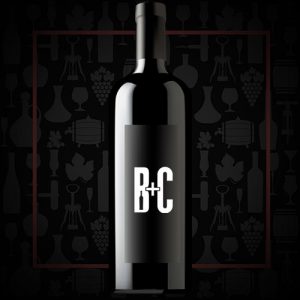Cellar Profile
Started in the 1970s by longtime friends Burt Williams and Ed Selyem, this was one of the first “garagistes” in Sonoma County. Using grapes sourced from small vineyards in the Russian River Valley, the original name “Hacienda del Rio” was later changed to Williams Selyem. Experimenting with new techniques and sourcing from the best vineyards in the region afforded the wines such acclaim that they were presold long before release, something that continues to this day. In the United States, there is a 6 month to 1 year wait list to be put on the mailing list to buy wines for release. In 1997, viticulturist and entrepreneur John Dyson and his wife Kathe purchased the Williams Selyem brand that had become too big for the original partners to manage. By that time, annual production was more than 10,000 cases – still small by most industry standards, but much larger than Burt and Ed had ever imagined when they bottled their first few barrels! The new owners brought famed winemaker Bob Cabral on board and the winery really began to take shape. They purchased their own vineyards, including a couple from the cool Sonoma Coast AVA, which allowed them to experiment with Burgundian varieties. They discovered that in the warmer parts of the Russian River Valley, Dijon clones of Pinot Noir ripen too quickly, so they utilize California heritage clones, with thicker skins and longer hang times, instead. Williams Selyem produces single vineyard offerings from their own vineyards as well as from the best growers in Sonoma, leveraging contracts signed over 30 years ago. The wines are still fermented in open-top dairy tanks, like they were in the 70s, using an indigenous Williams Selyem yeast clone discovered from a Zinfandel ferment in 1984. Non-interventionist techniques in the vineyard, coupled with a keen eye on phenolic ripeness, 25% whole-cluster fermentation and aging only in Francois Freres Burgundian oak barrels brought international acclaim to the wines, though they were (and are) almost impossible to find outside the US. In 2009, Wine Enthusiast gave the 2006 Litton Estate Pinot Noir 100 points, the first North American Pinot to be awarded a perfect score by a major international publication. Today, Jeff Managhas is Winemaker, with Chris Bowland managing the vineyards. Jeff prefers a more subtle, Old-World approach to winemaking and his first wines have been met with overwhelming critical approval.
Region
Sonoma Coast is one of the largest AVAs in Sonoma, covering the mountains along the Pacific coast from the border with Mendocino County to the top of San Pablo Bay. Despite its name, the Sonoma Coast AVA stretches quite a long way inland. Climatically speaking, the Sonoma Coast is decidedly maritime and is cooler and wetter than the rest of Sonoma County. This is, perhaps obviously, due to its proximity to the Pacific Ocean and the cooling fog that creeps into the coastal valleys via the Petaluma Gap during the summer. As a result of the cool climate, the distribution of grape varieties differs noticeably from that found in the drier, warmer climes inland. The Burgundy family are out in force here – Pinot Noir and Chardonnay together account for more than 75 percent of the AVA’s wines.
Vineyard
Sourced from the Terra de Promissio Vineyard, the Coastlands Vineyard and the Drake Estate Vineyards, ranging in elevation from 100-300 masl with mainly south-western exposures. All vineyards are irrigated and sustainably farmed.
Varieties
Pinot Noir—chiefly associated with the Burgundy region of France— is grown around the world, mostly in cooler climates. The grape’s tendency to produce tightly packed clusters makes it susceptible to several viticultural hazards involving rot that require diligent canopy management. When young, wines made from Pinot Noir tend to have red fruit aromas of cherries, raspberries and strawberries. As the wine ages, Pinot has the potential to develop more vegetal and earthy aromas that can contribute to the complexity of the wine. Thin skins and low levels of phenolic compounds lend Pinot to producing mostly lightly coloured, medium-bodied and low-tannin wines that can often go through phases of uneven and unpredictable aging.
Winemaking
Grapes were manually harvested and carefully transported to the winery, where they are produced with minimal intervention, including being foot trod instead of machine crushed. Fermentation takes place in oak with punch downs occurring every six hours. The wine is aged in oak (44% new, 56% 2nd use) for 10 months.
Tasting Notes
Dark cherry aromas and notes of pomegranate are evident at first nosing. Beneath the primary fruit character are hints of smoky herbs, dried citrus peel and wood spices. Very dense on the palate, the wine offers robust tannins and a sense of opulence. Dark cherry and pomegranate are echoed in the flavors with a subtle lift of citrus peel in the middle palate while the wine finishes with wonderful hints of Brazilian coffee.

 info@buyersandcellars.ca
www.buyersandcellars.ca
info@buyersandcellars.ca
www.buyersandcellars.ca